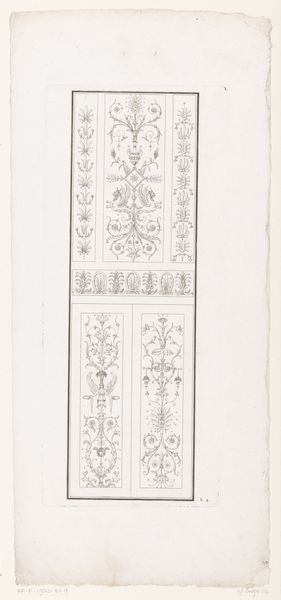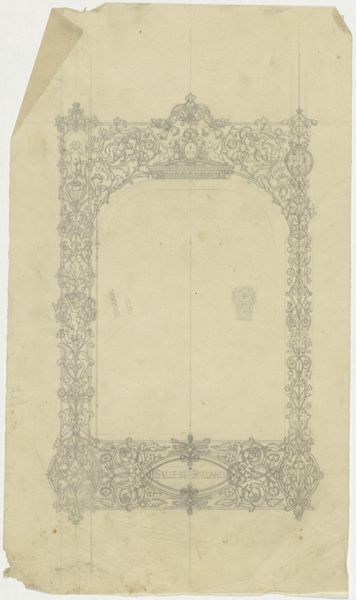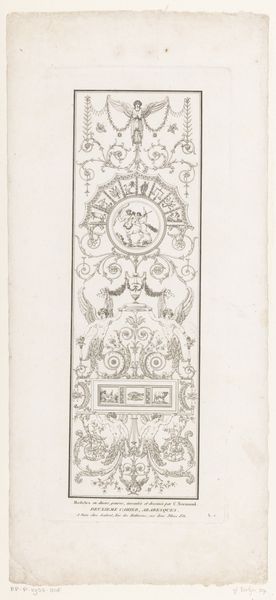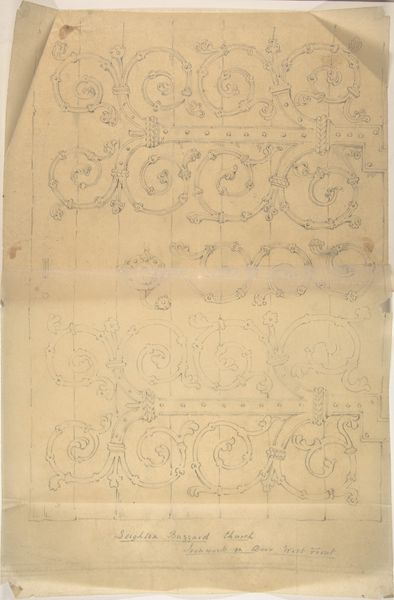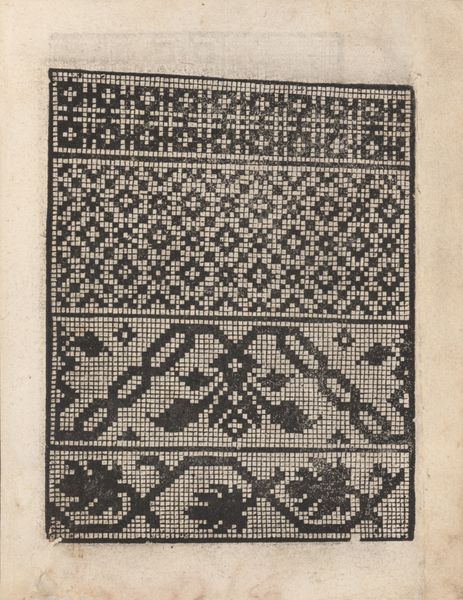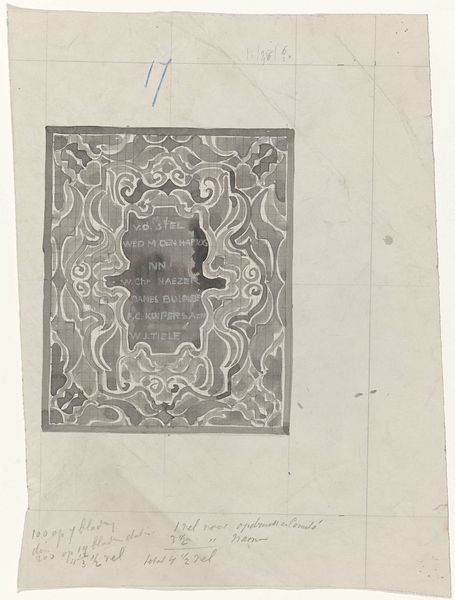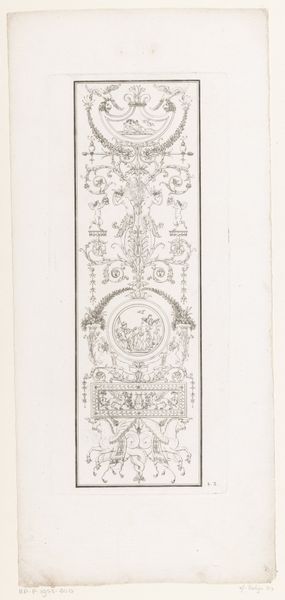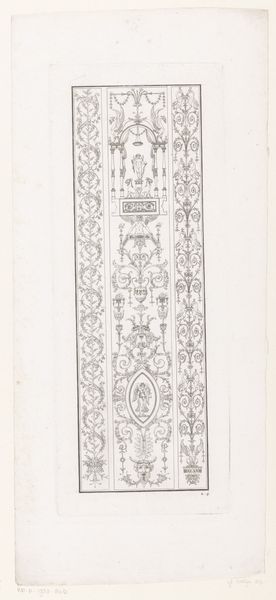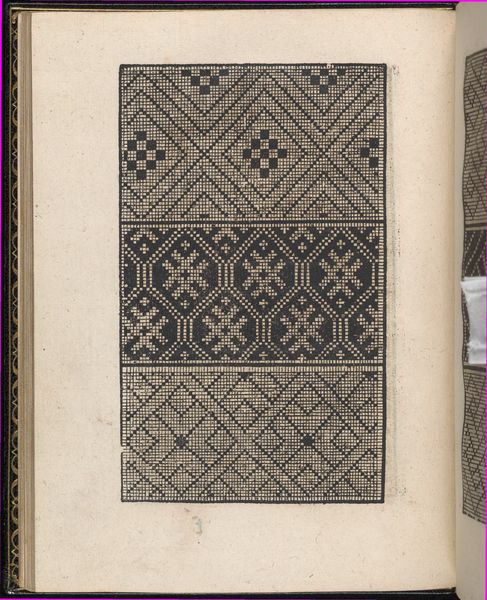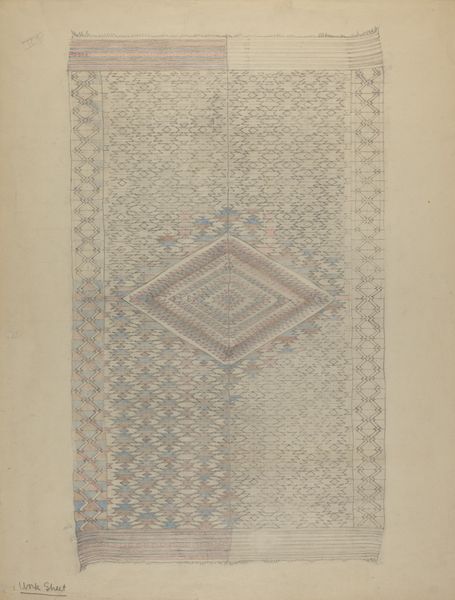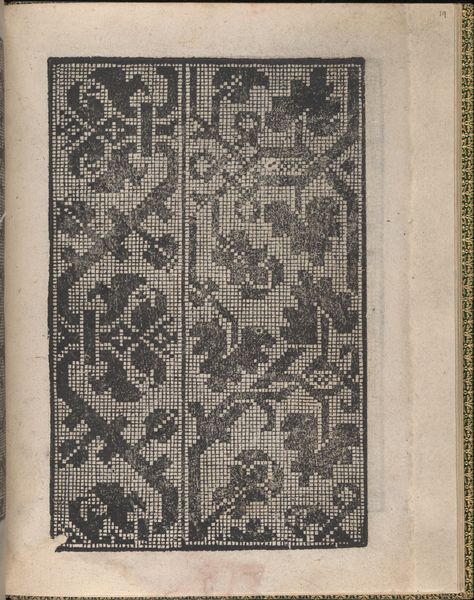
Blad met ornamenten, boot, wagen en wapen van Nederland 1874 - 1945
0:00
0:00
careladolphlioncachet
Rijksmuseum
graphic-art, ornament, print
#
graphic-art
#
natural stone pattern
#
naturalistic pattern
#
ornament
# print
#
pattern design
#
repetitive shape and pattern
#
organic pattern
#
geometric
#
repetition of pattern
#
pattern repetition
#
decorative-art
#
layered pattern
#
funky pattern
#
pattern work
Dimensions: height 505 mm, width 615 mm
Copyright: Rijks Museum: Open Domain
Editor: Here we have "Blad met ornamenten, boot, wagen en wapen van Nederland" by Carel Adolph Lion Cachet, made sometime between 1874 and 1945. It's a print, full of geometric patterns, with imagery of Dutch symbols like a ship and coat of arms. The effect is almost like wallpaper or textile design. How do you read this artwork? Curator: I see a fascinating intersection of production and national identity. Consider the *process* of printmaking here – the repeatable nature, the potential for mass production. It invites us to question: how does that production then shape or reinforce ideas about "Nederland", about Dutch identity and its symbols? Editor: That's a good point! The repeated patterns almost feel like they're *manufacturing* Dutchness, in a way. Curator: Exactly! Think about where this kind of printed material might have been used. Was it high art for a gallery, or more likely a design element for domestic objects, for wallpaper as you said? The intended *use* directs our analysis, raising questions about the social life of images and how national identity seeps into everyday materiality. Editor: So, it's less about admiring the aesthetic skill and more about thinking about where the print ended up, how it was consumed, and how it might have shaped people's sense of national belonging. Curator: Precisely. It challenges the notion of "high art" by rooting us in the practical applications, and the labour that underpins such material. What can we infer about production or labour, about accessibility and consumption based on this object and others of its era? That moves us to challenge how these images reflect power, status, and, most essentially, consumption within a culture. Editor: Wow, I'll never look at decorative prints the same way again. Thank you for sharing these valuable insights.
Comments
No comments
Be the first to comment and join the conversation on the ultimate creative platform.

